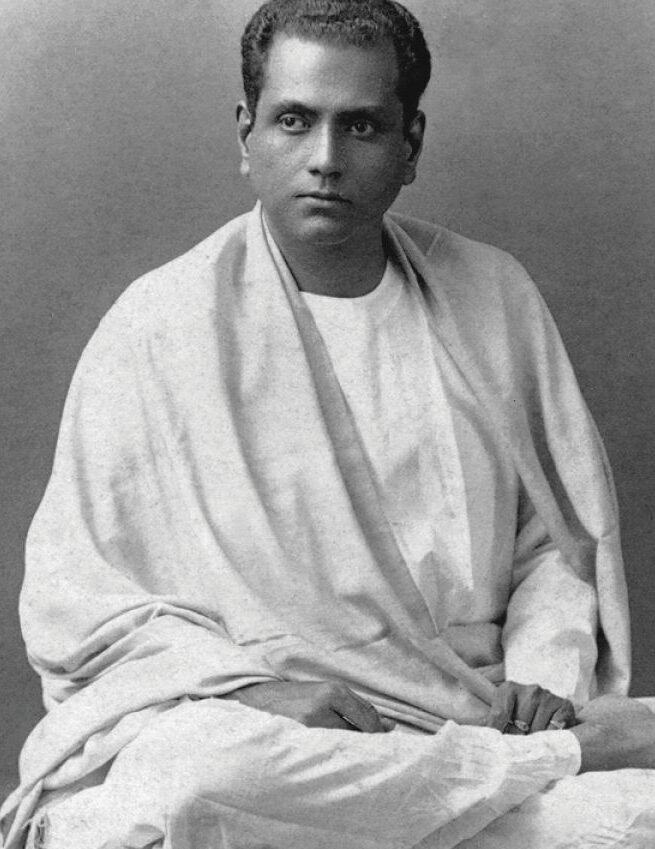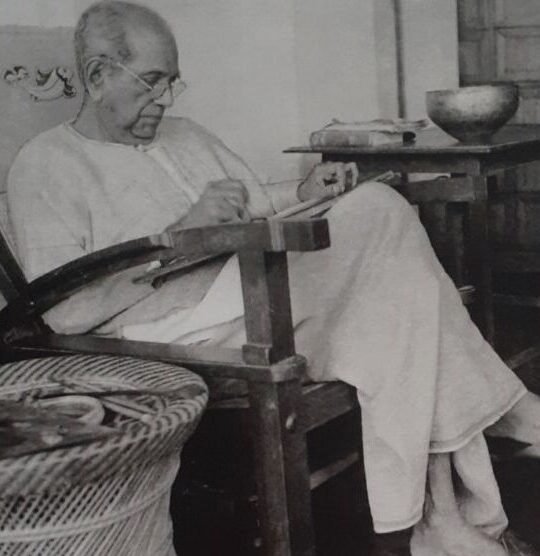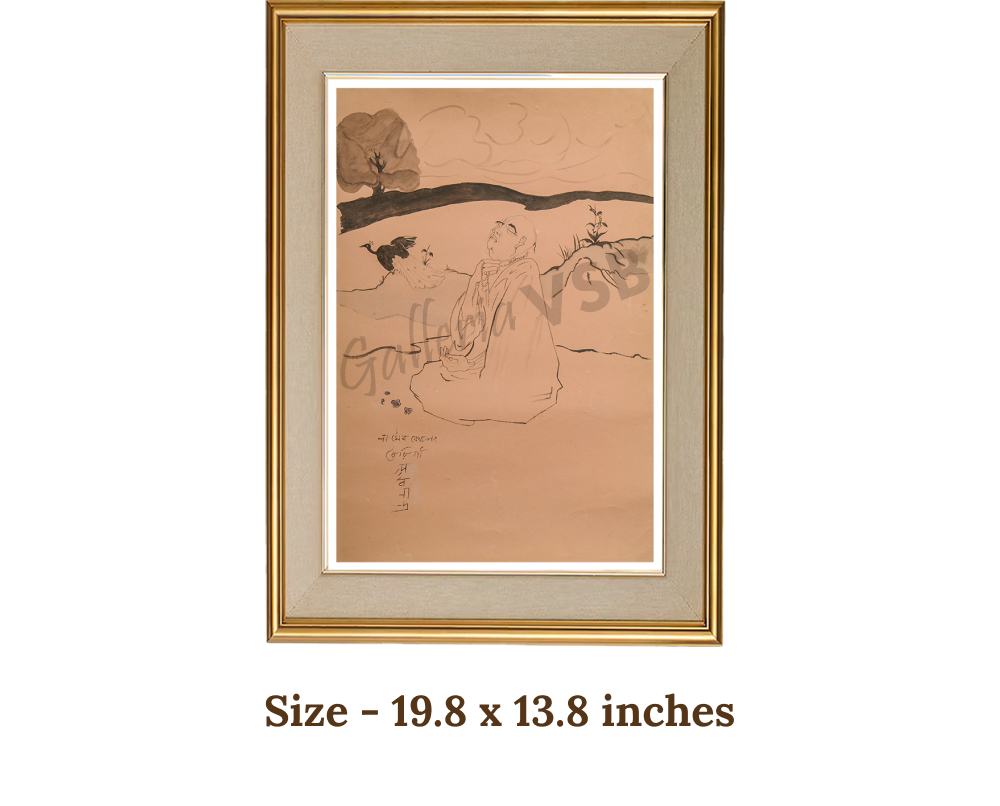
Abanindranath Tagore, born on 7 August 1871 in Jorasanko, Calcutta, was an important Indian artist. He learned pastel, watercolour, and life drawing from his tutor, Signor Gilhardi, and later studied oil painting and portraits with English painter Charles Palmer. In 1895, he created the Krishna-Lila series, blending European and Indian styles. E.B. Havell, the Principal of Calcutta School of Art, was so impressed by his work that he made Abanindranath the Vice-principal. Under Havell’s guidance, he explored Mughal and Rajput painting styles.
Abanindranath met Japanese art scholar Okakura in the early 1900s, who influenced his approach to composition and unity in art. Two of Okakura’s students, Yokoyama Taikan and Hishida Shunso, taught Abanindranath techniques such as light brushwork, which he applied to his Omar Khaiyam series.Abanindranath is known for creating a new Indian art style, helping to revive Indian painting. He played a key role in the modern art movement in Bengal.
DISTINCTIVE STYLE
In the early 1900s, Abanindranath Tagore’s artwork was shaped by Japanese scholar Okakura Kakuzo, who introduced him to composition and artistic unity. He also learned light brushwork techniques from Japanese artists Yokoyama Taikan and Hishida Shunso, influences reflected in his Omar Khayyam series.
As the pioneer of the Bengal School of Art, Abanindranath sought to revive traditional Indian art while embracing modernist elements. Tagore’s paintings created a unique fusion of heritage and innovation, establishing a distinct Indian artistic identity.
His painting “Bharat Mata” (Mother India), created in 1905, became an iconic representation of Indian nationalism and is often credited with inspiring the Indian independence movement. The painting depicted a personification of India as a goddess, symbolizing the country’s cultural and spiritual heritage. This work, along with others, positioned Abanindranath as a leading figure in the Indian art scene and a voice for cultural revival.

Artistic Philosophy & Contributions
Abanindranath Tagore’s artistic philosophy was rooted in the belief that art should reflect the spiritual essence of Indian culture. He sought to transcend the limitations of Western artistic conventions and embraced a more introspective and emotive approach. His works often explored themes of nature, mythology, and the human experience, drawing from India’s rich literary and cultural traditions.
In the early 1900s, Abanindranath’s artistic philosophy was profoundly influenced by Japanese art scholar Okakura Kakuzo, who introduced him to principles of composition and artistic unity. Japanese artists Yokoyama Taikan and Hishida Shunso also taught him techniques like light brushwork, which became evident in his renowned “Omar Khayyam” series.
In addition to painting, Abanindranath was a prolific writer and educator. He wrote extensively on art and aesthetics, contributing to the discourse on Indian art history. He served as the principal of the Government School of Art in Calcutta, where he influenced a generation of artists, including his students, who would go on to become prominent figures in their own right.

His legacy
Abanindranath Tagore’s contributions to Indian art and culture have left an indelible mark on the country’s artistic landscape. He is often regarded as the father of modern Indian painting, and his efforts to establish a national identity in art continue to resonate today. His works are celebrated for their innovative blend of traditional and modern elements, and they have been exhibited in galleries and museums around the world.
Abanindranath passed away on December 5, 1951, but his legacy endures through the continued appreciation of his art and the influence he has had on subsequent generations of artists. His commitment to fostering a distinct Indian artistic identity and his role in the Bengal Renaissance have solidified his place as a pivotal figure in the history of Indian art.
In summary, Abanindranath Tagore’s life and work exemplify the rich interplay between tradition and modernity in Indian art. His visionary approach and dedication to cultural revival have made him a lasting symbol of artistic innovation and national pride in India. His legacy continues to inspire artists and art enthusiasts, ensuring that his contributions to Indian art remain relevant and celebrated.





